Content
It is difficult to imagine at least one private house in the southern region, next to which no grapes grow. This plant can not only supply sweet berries to our table. Aromatic vinegar, raisins and churchkhela, so beloved by children, are prepared from grapes. Its berries are used as raw materials for the manufacture of alcoholic beverages - wines, cognacs, brandy. How many grape varieties there are today - it is difficult to say, it is known for sure that there are more than 3000 of them only on the territory of the former Soviet Union, but this number is constantly growing. Taking into account our specifics, breeders develop vines that can survive and produce crops in harsh climates.
Perhaps the most famous and popular product of viticulture is wine. In southern countries, such as France, Italy or Spain, entire regions have been cultivating and processing sun berries for centuries. Although our climate is different from the Mediterranean, anyone can make Isabella wine at home.
Isable grape varieties
Isabella is a variety of American origin, obtained by natural hybridization of the Labrusca grape (Vitis labrusca), which in English-speaking countries is called fox. It is distinguished by deep blue berries with thick skin, sweet slimy pulp and characteristic strawberry aroma. Few people like the specific taste of isabella, but the wines and juice from it are excellent.
Through further hybridization of Labrusca grapes with European species and directed selection, many varieties were obtained, the most famous in our country: Lydia, Seneca, American Concord, Ontario, Buffalo, Early Pineapple, Niagara. Their color can vary from green with a faint purple or pink bloom to dark blue or purple. The slimy berries and flavor remain unchanged. The advantage of isable varieties is their yield, high resistance to typical grape diseases and the fact that they do not need shelter for the winter. The frozen vine regenerates quickly, releasing many new shoots.
Isabella and its related varieties are wine-table, which means that the berries can be eaten fresh or processed into juice or wine. There is now an opinion that the use of Labrusca grapes is dangerous to health. Supposedly, isabella contains harmful substances, and processed products contain a lot of methanol. It is not true. In fact, almost all alcoholic beverages contain a small amount of wood alcohol. Its concentration in isabella wine is almost half lower than the officially allowed in the territory of the EU countries.
Perhaps the ban on the use of Labrusca grapes is associated with protectionist policies, and nothing more. On the territory of the post-Soviet republics, the ban on isabella does not apply, it grows in almost every private southern (and not so) courtyard, annually pleasing the owners with a rich harvest.
Harvesting grapes and preparing containers
In order to make Isabella wine at home, you need to choose the right time for harvesting. This is a late variety, usually the bunches are removed from mid to late autumn 2-3 days after watering or rain.Schedule the time so as to start processing no later than 2 days later, otherwise the Isabella grapes will lose some of the moisture, aroma and nutrients, which will make the wine much worse.
Break off the bunches, discard any green or rotten berries. Unripe grapes sour, therefore, making wine will not do without adding sugar and water. This will not only worsen the taste of the drink, but also increase the content of the same notorious wood alcohol (methanol) in it. If you make wine with the addition of overripe Isabella berries, you risk getting very aromatic grape vinegar instead. So raw materials of high quality are an indispensable condition for the preparation of high-quality alcohol.
Oak barrels are considered the best containers in winemaking. Unfortunately, not everyone has the opportunity to purchase because of the high cost or lack of space. Isabella wine at home can be prepared in glass bottles of different capacities - from 3 to 50 liters.
Before use, large cans are washed with hot water and soda and rinsed, and three- or five-liter cans are sterilized. In order to prevent oxygen from entering the fermentation vessel of Isabella grapes and not make vinegar out of it, you will need a water seal.
If a barrel is still used to make grape wine, it must be processed as described in our article. "A simple recipe for grape wine", here, if necessary, you will find sourdough recipes.
Isabella wine color
Isabella can be made into red, pink or white wine. It doesn't take much effort to do this. The main difference between white grape wine and red wine is that it ferments on pure juice, without skin and seeds (pulp). When fully cooked, a light drink is obtained, devoid of astringency and rich aroma.
- Before doing white wine from grapes isabella, the juice is separated immediately using a hand press or other device, therefore skipping the mash fermentation step. The skin remaining after pressing still contains a lot of aromatic liquid; in the Caucasus, chacha is prepared from it.
- In the production of red wine, Isabella grapes are crushed and put into fermentation along with the pulp, sometimes returning part of the ridges (no more than 1/3) to the container. The longer the peel and seeds will give the substances in them to the juice, the richer the color and taste of the drink at the outlet will be. Fermentation usually lasts from 3 to 6 days, but the wort can be infused on the pulp for up to 12 days (no more).
- How to make a rosé wine from Isabella grapes, which is, as it were, intermediate between red and white? It's simple. The juice ferments with the pulp for a day, then it is squeezed out. Isabella wine will take on a pink hue and taste slightly tart.
A little about adding sugar and water
Surely the inhabitants of the southern regions are perplexed why there is sugar in the Isabella wine recipes at all, because the berries are already sweet. A classic of the genre - pure grapes, fermented! And the water? Yes, this is pure barbarism! Even if you add not the maximum allowed 500 g of foreign liquid per liter of juice to the wort, but less, the taste of the wine will greatly deteriorate.
In their own way, they are right, because under the southern sun, Isabella grapes are gaining 17-19% of sugar. But the vine is grown even in Siberia, and there, excuse me, this figure barely reaches 8%. So the inhabitants of cold regions are surprised why isabella grapes are called sweet everywhere. And here one cannot do without sugar or water in the production of wine.
Isabella wine production
There is nothing difficult in making wine from Isabella grapes at home. There are many recipes. If you don't add sugar, you will get an excellent dry wine, add - a dessert wine will come out, to give more strength after fermentation, you can pour in alcohol, vodka or brandy.
We will show you how to make white and red wine from Isabella grapes without any additives with a photo, and also tell you how to make a sunny drink from sour berries.
Isabella red wine
This simple recipe can be called universal for the production of wine not only from Isabella grapes, but also from other varieties. Let's assume that our berries are sweet (17-19%). If you do not like too dry grape wines, you can add a little sugar during the preparation process.
Ingredients
Take:
- isabella grapes;
- sugar.
For the production of dry wine, sugar is not needed at all, in order to get a dessert one, for each liter of grape juice you will need to take from 50 to 150 g of a sweetener (honey can act in this capacity).
Cooking method
We remind you that grapes must not be washed before making wine. Tear off the berries, discard any green, rotten or moldy ones. Mash them in a clean dish with your hands, with a special crush or in any other way, being careful not to damage the bones (otherwise the finished wine will taste bitter).
Place the container with prepared Isabella grapes in a warm place protected from sunlight. Fermentation should take place at 25-28 degrees. At 30, the microorganisms responsible for the process may die, and at 16 they stop working. In both cases, we will spoil the Isabella wine.
In about a day, active fermentation will begin, the grape pulp will float. It will need to be stirred several times a day with a wooden spatula.
After 3-5 days, strain the juice into a clean container, squeeze the pulp, install a water seal or put on a rubber glove with one pierced finger. Move to a dark place with a temperature of 16-28 degrees.
If you want to get just a young light wine from Isabella grapes with a strength of no more than 10 turns, do not add anything else. After 12-20 days, fermentation will stop and it can be bottled.
If Isabella wine does not ferment well or you just do not like sour alcohol, drain a little wort, and add 50 g of sugar for each liter of the brewed drink.
With the addition of 2% sugar, you will increase the grape wine by 1%. But you will not be able to raise its strength above 13-14% (yeast will stop working). The recipe for fortified wines involves blending, in other words, adding alcohol to the finished product.
When the grape drink reaches the required sweetness and strength, and the odor trap or glove stops emitting carbon dioxide, remove it from the sediment.
Pour the grape drink into clean bottles, take it to the cold and let it rest in a horizontal position for 2-3 months. First, once every 2 weeks, and then filter it less often. So the wine will become transparent and will improve the taste, although it will be possible to drink it immediately after removal from the sediment.
Isabella white wine
Isabella wine can be called white only conditionally, since when the berries are squeezed out, a little coloring matter will still get into the wort.
Ingredients
You will need:
- isabella grapes;
- sourdough - 1-3% of the total wort volume;
- sugar - 50-150 g per liter.
For the production of dry or table wine, you will need no more than 2% sourdough, dessert - 3%. A link to an article describing its preparation is given at the beginning of the article. If you manage to buy wine yeast, use it instead of the leaven according to the instructions.
Cooking method
Using a press, squeeze the juice from the Isabella grapes, combine it with the sourdough, pour into a clean glass bottle, and put a cut under a water seal or pull on a glove.
Further in our recipe, wine is prepared in the same way as red. We simply skip the stage of fermentation on the pulp and subsequent decanting of the wort.
Isabella wine with added water and sugar
The taste of Isabella wine with the addition of water will be simpler than that made from pure grapes. But if the berries are sour, you don't have to choose. Just try to add as little water as possible.
Ingredients
To make wine from sour berries you need:
- isabella grapes;
- water - no more than 500 mg per 1 liter of juice;
- sugar - 50-200 g per 1 liter of juice;
- sourdough - 3% of the wort volume.
If you have wine yeast, replace the starter with it, using as instructed.
Cooking method
Tear off and sort the Isabella grapes, mash, dilute the pulp with water and a pre-made sourdough, add sugar at the rate of 50 g per 1 kg of berries. Add more liquids, the more acidic the original product, but do not get carried away.
Place the grapes for fermentation in a warm place (25-28 degrees), be sure to stir the pulp several times a day.
If the wort ferments poorly, add sugar or water. You may need up to 12 days for the process to proceed satisfactorily. The wort is ready to be wrung out when the top of the mash has completely released the juice.
Next, prepare Isabella wine as indicated in the first recipe. Care must be taken to ensure that fermentation takes place intensively, if necessary, add water and add sugar.
Watch the video for another way to make homemade Isabella grape wine:
Conclusion
The recipe turned out to be voluminous, but it will not be so difficult to prepare it. Enjoy homemade wine, just remember that it can only be beneficial if used in moderation.
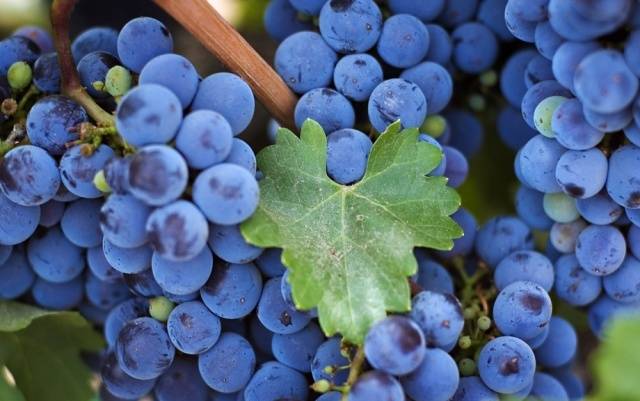
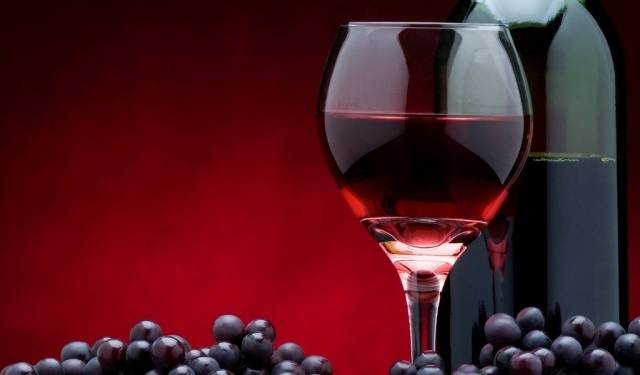
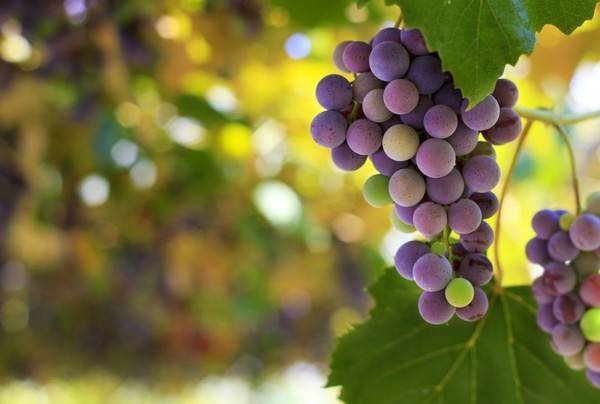

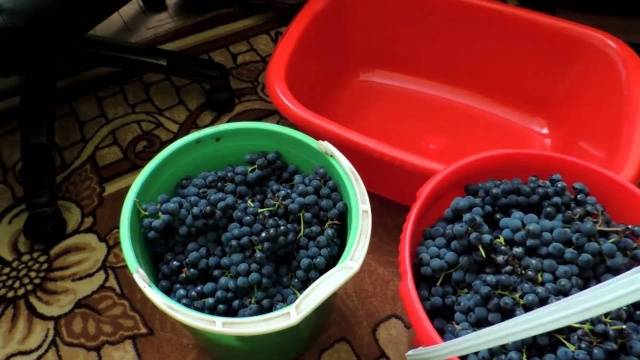

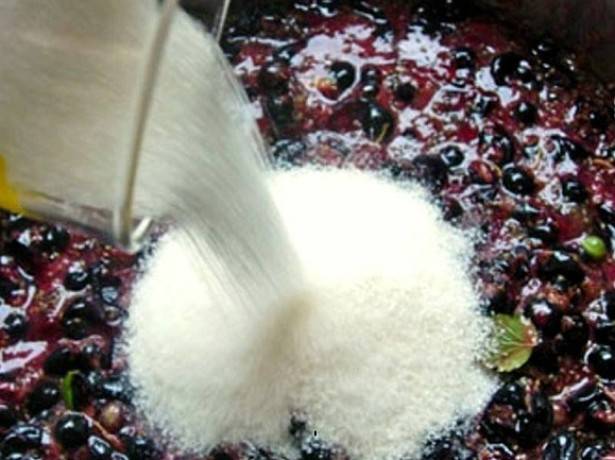
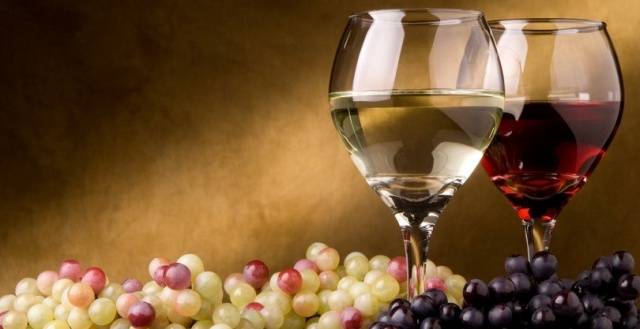
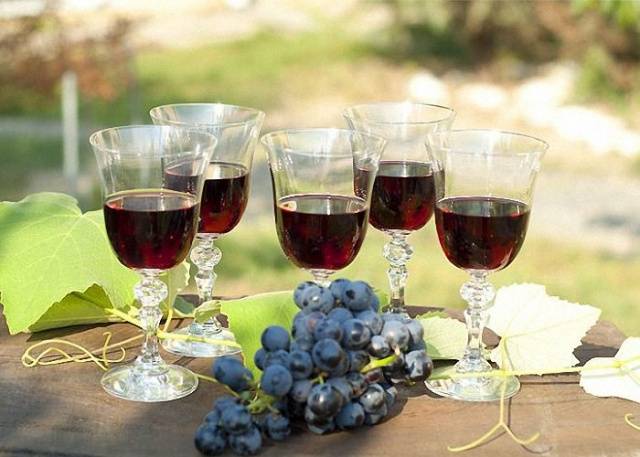
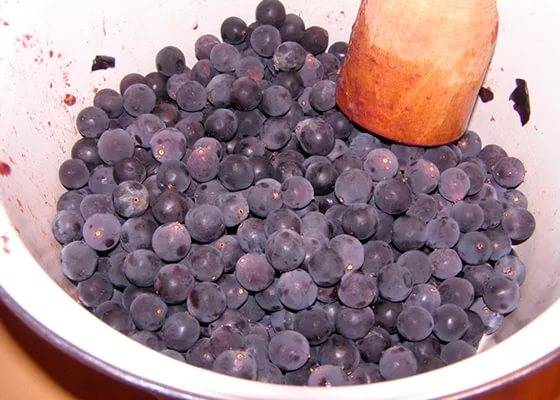

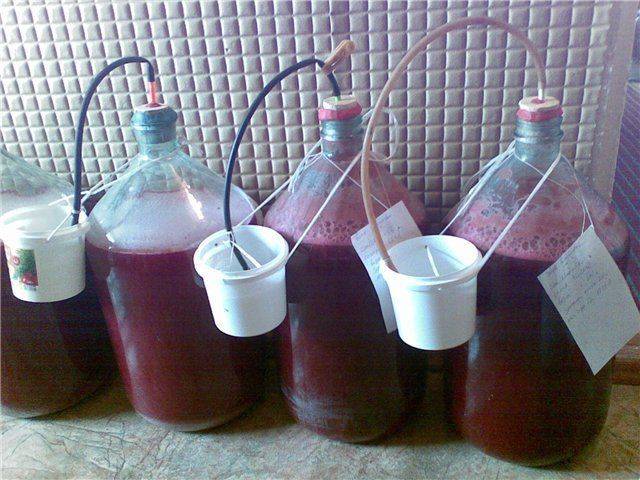
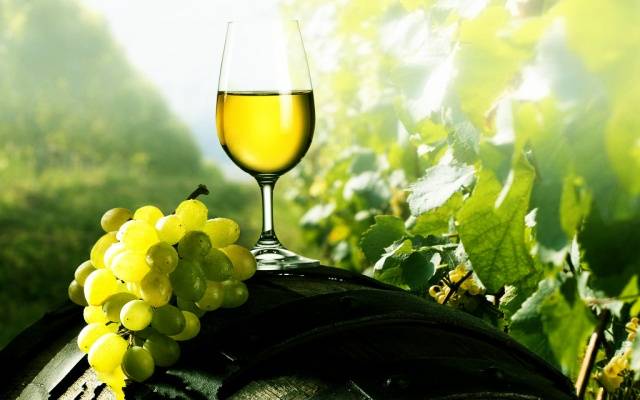
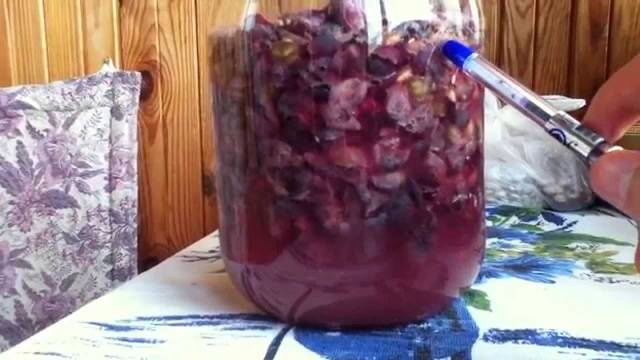

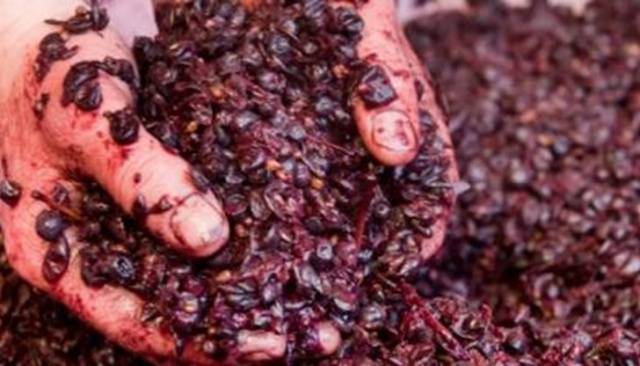









how to use the pressed pulp further?
Can I use stainless cookware?